Hwange’s vast wilderness is more than a safari destination – it’s a frontline for conservation. Africa Geographic’s 2024 Photographer of the Year winners party embarked on an unforgettable Hwange conservation safari, handing over sponsored lion collars, meeting local conservation heroes, and witnessing the delicate balance between wildlife and communities. From towering elephants to elusive lions, and from village visits to predator research, this adventure uncovered the raw beauty and pressing challenges of protecting Africa’s wild spaces. Simon Espley reports.
Our three 2024 Photographer of the Year winners handed over sponsored lion collars to a team of dedicated predator researchers and learned how these collars keep local villagers safe from roaming lions that threaten lives and livelihoods. We discussed elephant politics with a local village headman, attended a school assembly, chatted with young learners and toured a village clinic paid for by an innovative community-owned rhino project. We marveled at herds of elephants and buffaloes emerging from the dust, craggy male lions patrolling their kingdoms and warrior lionesses nursing tiny furry bundles. We ogled sable antelope with sweeping horns and watched striding ground-hornbills and secretary birds.
After saying goodbye to our photographer winners, I journeyed on to the remote wilderness of southwestern Hwange – guided by a local legend with Hwange soil in his veins. He educated me about conservation issues beyond the realm of photo tourism, of a rapidly growing elephant population that is impacting heavily on woodland, of broken national park fences and desperately poor communities whose daily struggle to find water and food defines their relationship with wildlife.
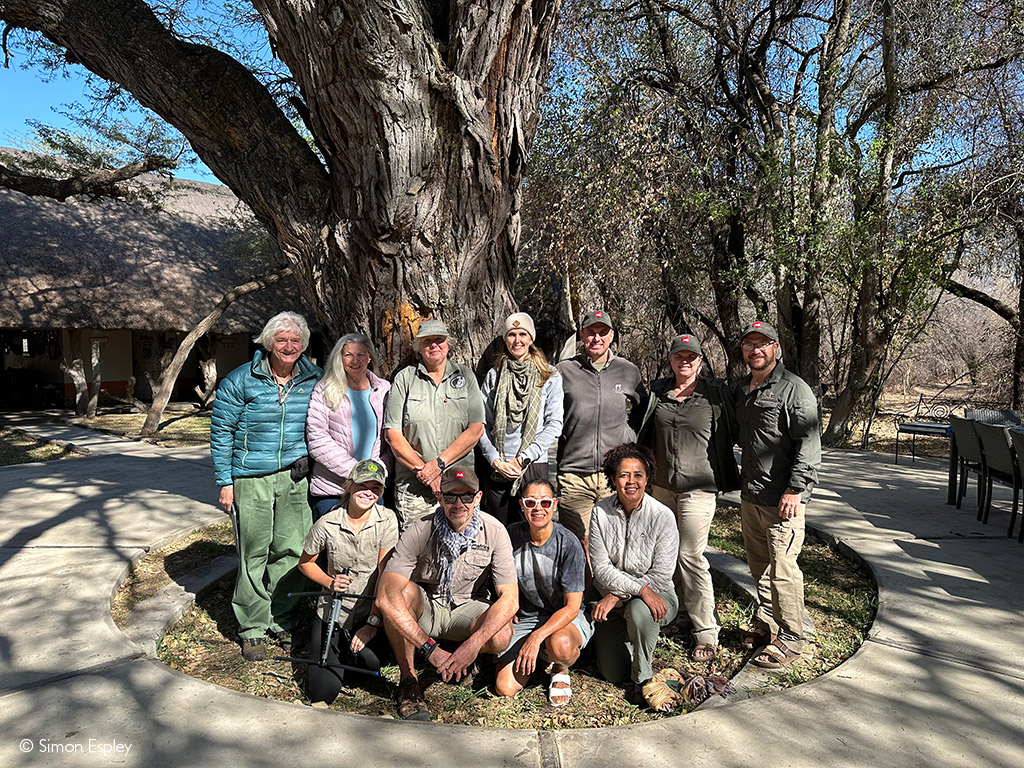
Our happy group of travellers gathered in the dappled morning light under the massive camelthorn tree at the lodge of the same name by Simon Espley.
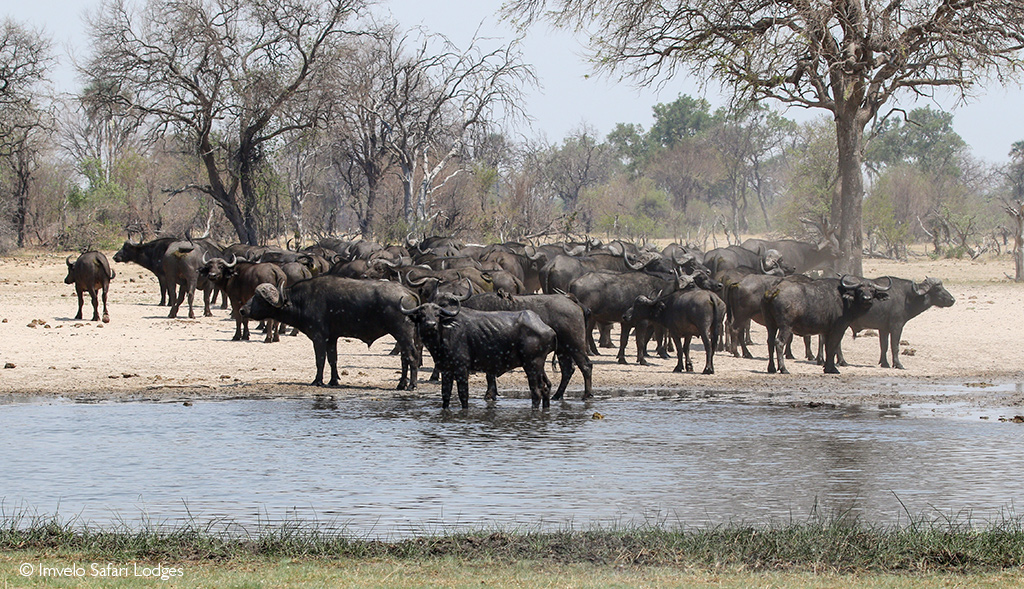
Late dry season sees large herds of thirsty buffalo converge at waterholes by Mark Butcher, Imvelo Safari Lodges.
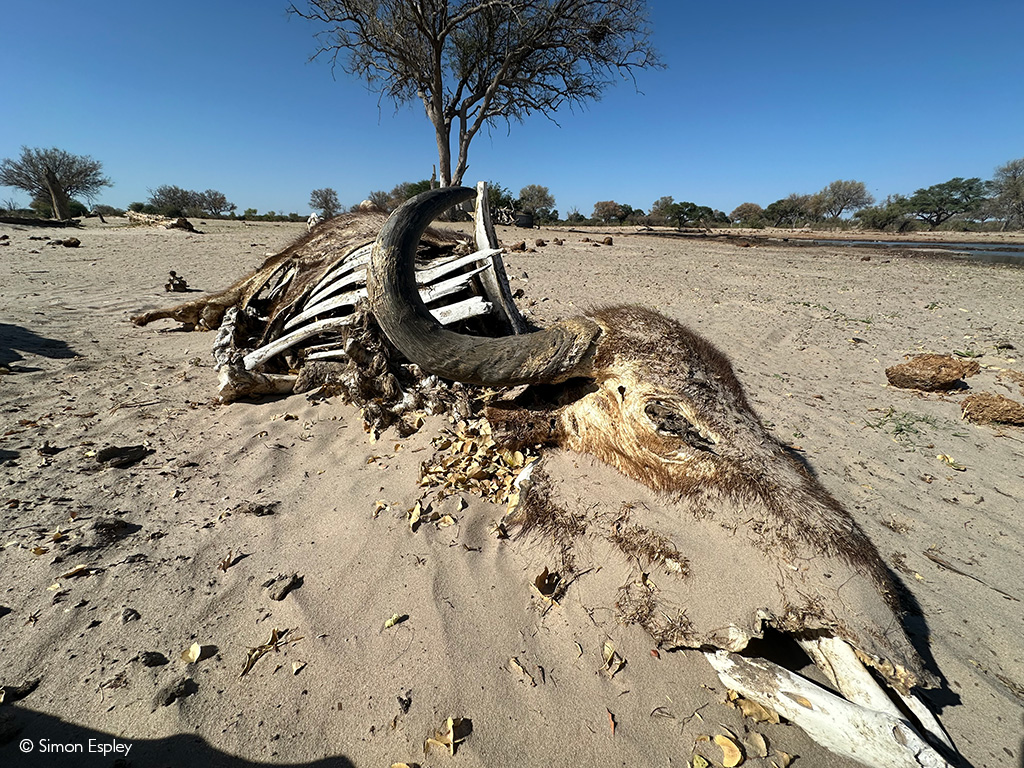
Drought takes its toll by Simon Espley.
I also got to ponder the meaning of modern human life with master photographer guide Greg du Toit as we watched desperately thirsty buffaloes and elephants crowding artificial waterholes as the drought tightened its grip. Greg lamented that predators feast on stricken elephants, baby antelope die agonising deaths, and dust devils whirl through naked trees. Yet, humankind increasingly distances itself from our biological home and reality – distracted by technology, ideological constructs and fantasy digital worlds.
Of course, this drought will end – and the bushveld will recover. Real life is about seasons and cycles, feast and famine. I love this place – Hwange, Zimbabwe, Africa.
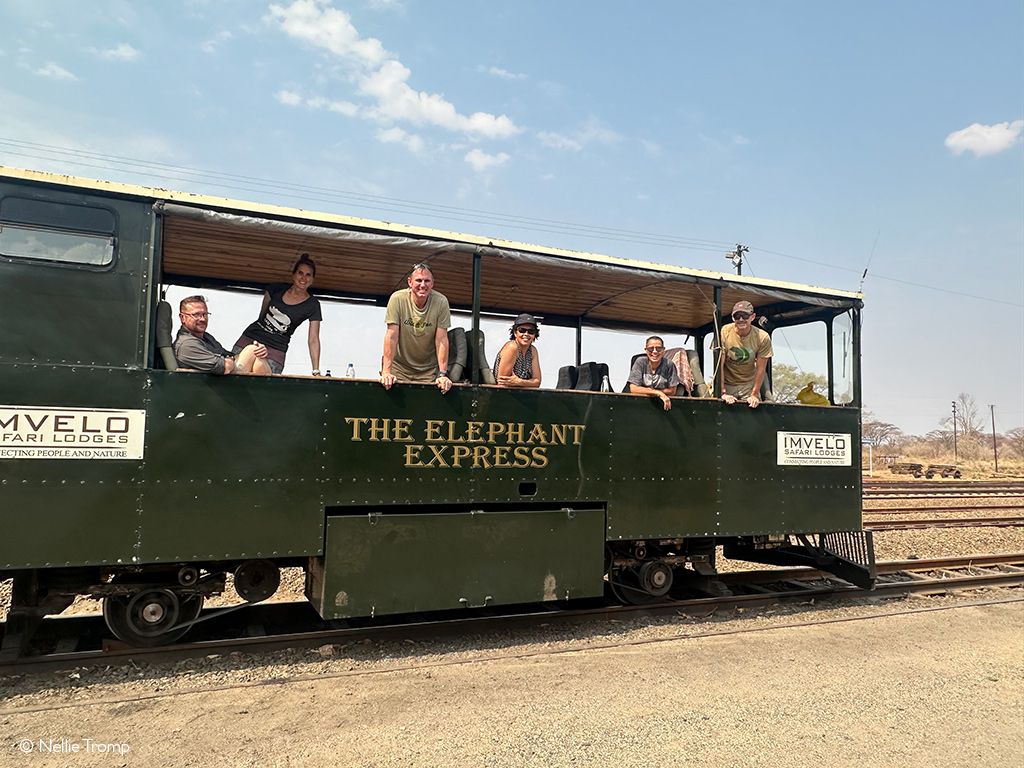
About to head off on the Elephant Express from Dete Railway Station by Nellie Tromp.
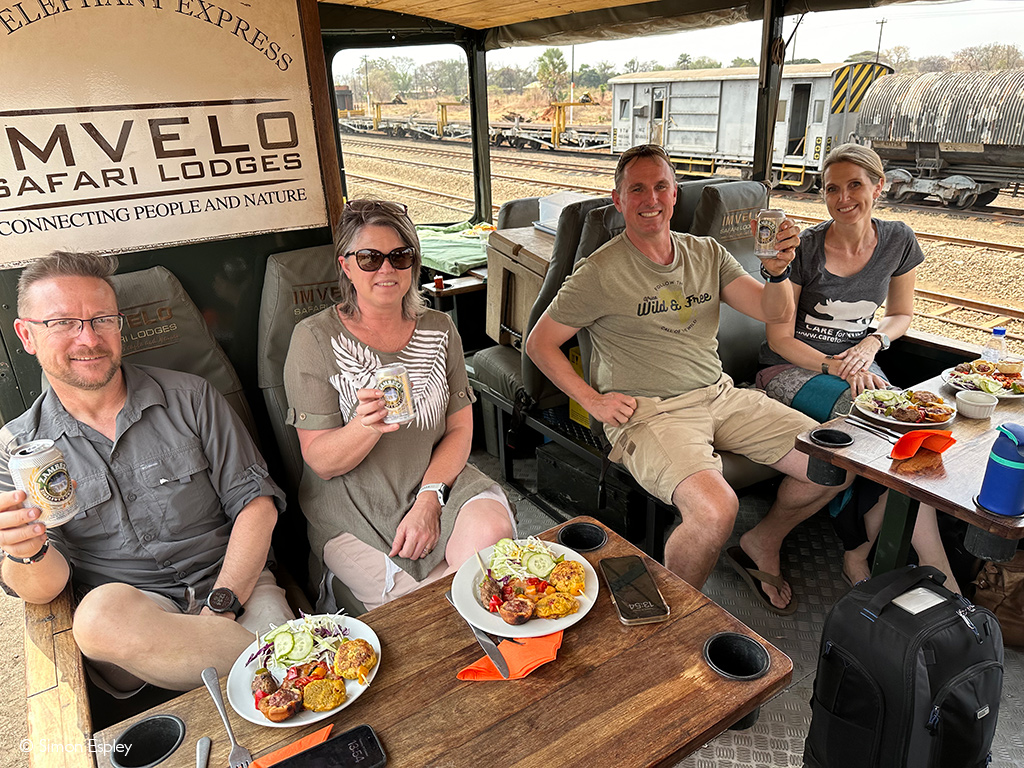
Can life get any better? by Simon Espley.

A team of Africa Geographic safari experts visited Hwange a few months later – amidst early summer rains and a greener landscape by Mark Butcher, Imvelo Safari Lodges.
Lions, communities and rhinos
Lion collars are an essential tool for keeping humans and free-roaming lions safe from each other (read more about our Collar a Lion campaign here). Our 2024 Photographer of the Year winners found that out for themselves when their prize included three sponsored tracking collars. I spent 5 days with our winners in eastern Hwange, courtesy of Imvelo Safari Lodges and Southern African Conservation Trust. The three collars were handed over to Oxford University’s WildCru – the research organisation that keeps an eye on these lions.
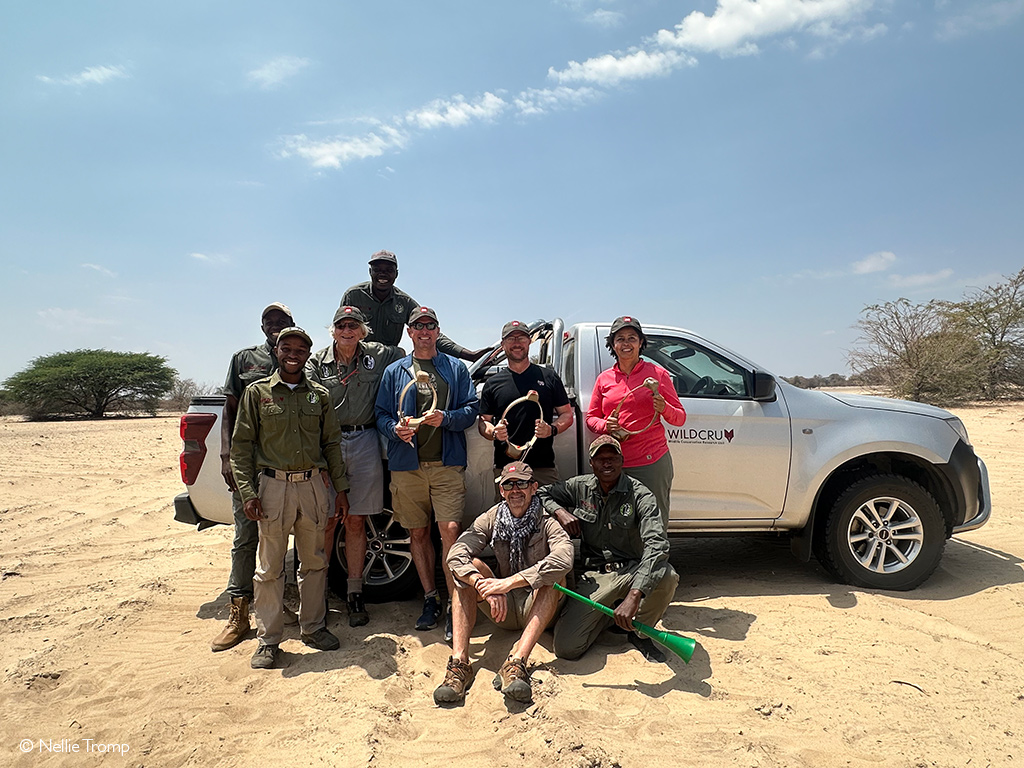
Our winners and guests hand over the sponsored collars to the Long Shield Lion Guardians by Nellie Tromp.
We learned from the Long Shield Lion Guardians operating in areas bordering Hwange that they collar ‘problem lions’ with a reputation for wandering into community areas. The usual suspects are young male lions of about 2–3 years old forced out of their natal area by the dominant pride males. In the perfect world, these youngsters would wander far and wide and find females to start their own pride. But of course, rampant human population expansion throughout Africa has resulted in formally protected areas like national parks and game/forest reserves being surrounded by humans, livestock and crops. The result is regular encounters between the two species and a death toll for both. Female lions with cubs also often leave protected areas to seek refuge in ‘safer’ community areas when their pride males have been chased away or killed by other male lions or trophy hunters (claims by trophy hunters that they only shoot old non-breeding males are fictitious). The females know that the incoming males will kill their cubs to further their own genetic lines and that they are safer in the community lands than in the parks.
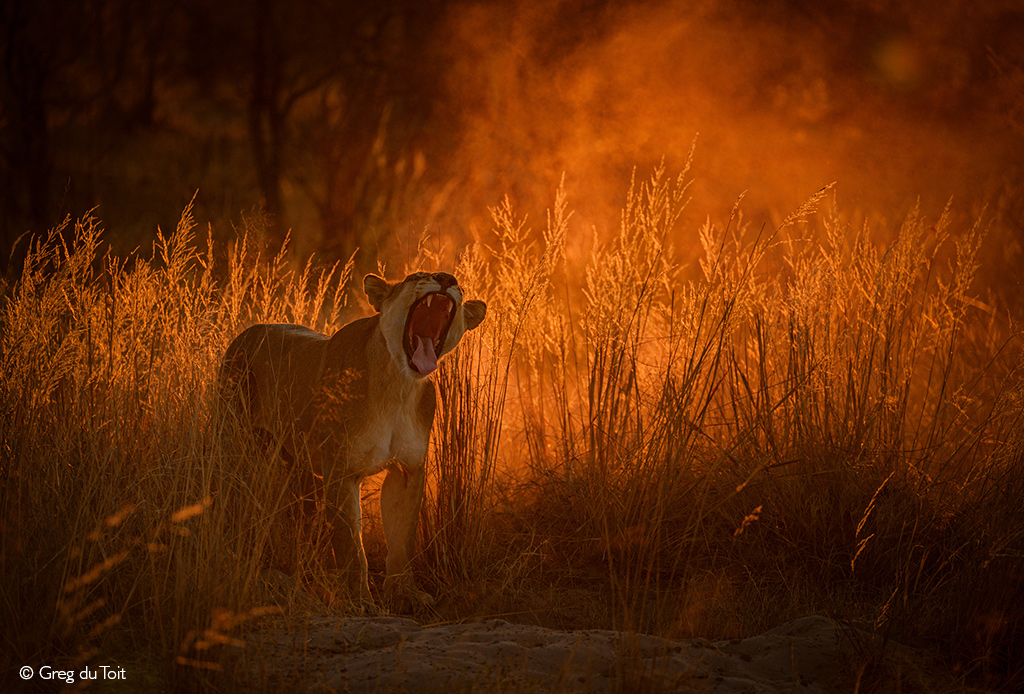
This lioness spent hours trying to dig up a warthog from its sandy burrow. Exhausted, she eventually gave up by Greg du Toit.
This is where the collars come in. Collared lions leaving the parks trigger an alert to the lion guardians who track the lions and push them out of the community areas. But where can they go to be safe? This is a vexing question with no obvious solution. We spent time with a team of these brave guardians, who enthralled us with stories of their encounters with local lions. They advised us that hyenas are responsible for most human fatalities, but lions and elephants get the wrap because humans are scared to walk around at night when they are in the area. Blaming them helps rid the neighbourhood of lions and elephants.
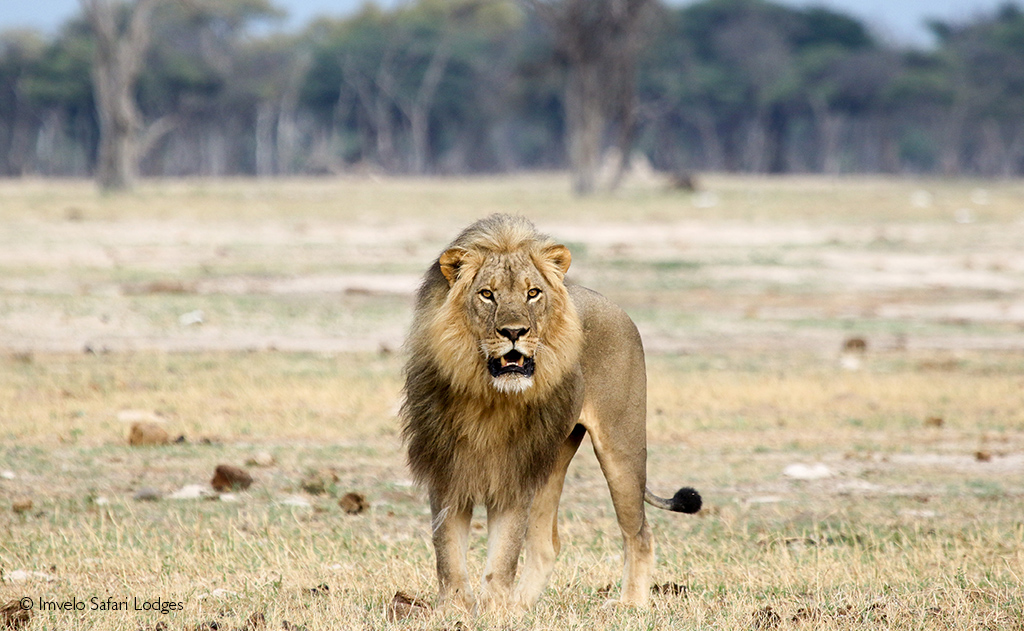
Hwange is known for its large male lions – popular targets for photographers and trophy hunters alike by Mark Butcher, Imvelo Safari Lodges.
During our 5-day adventure in Hwange, we spent time with the Bomani Lion Pride – including three lionesses with cubs. We also bumped into the two magnificent dominant males of the area – Mzilikazi (Tip) and Lobengula (Tufty) – as they patrolled their territory.
We also visited the 104-household Ngamo Village adjacent to Hwange National Park and spent time with the village chief, Johnson Ncube. This delightful gentleman entertained us with stories of his life and gave us insight into the joys and challenges of rural village living. He was immensely happy with the direct benefits generated by Imvelo Safari Lodges from tourism activities (more about that later) but expressed frustration at the lack of direct benefit from trophy hunting. He and his wards appreciate the meat they get from some trophy hunts but do not see any direct cash inflow. Johnson also took us to his home to meet his family. He escorted us to a vibey performance by a village drumming and dance group, which had us all dancing like nobody was watching – much to the amusement of the gathered locals. What a wonderful morning out.
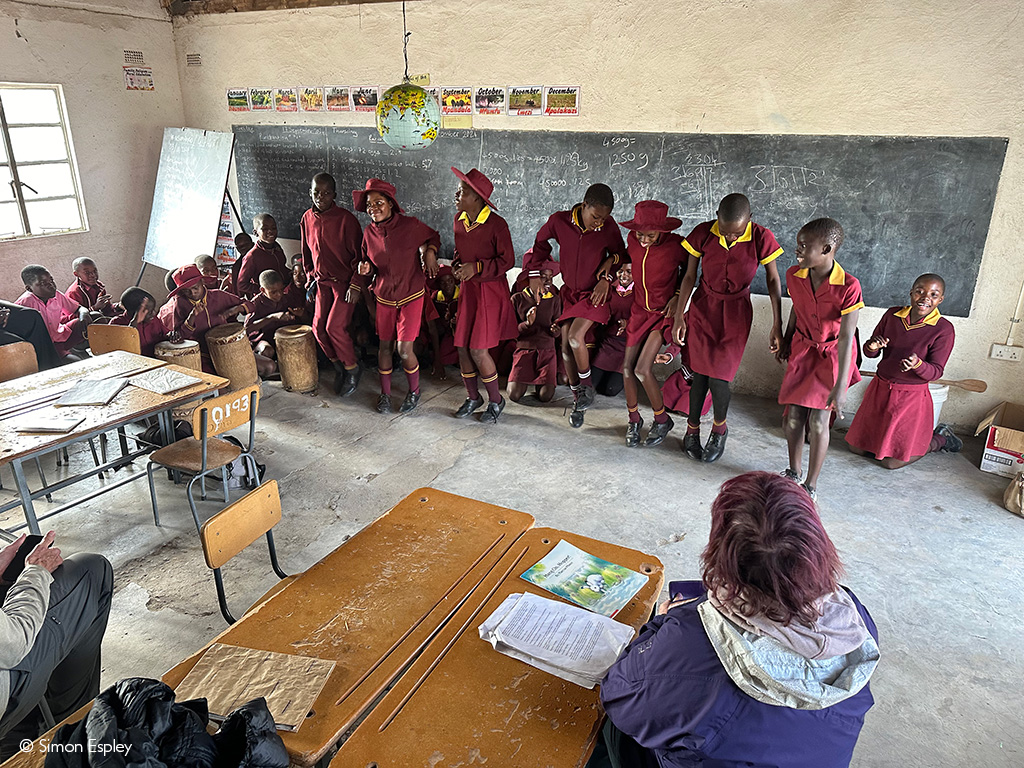
We met learners at the Ngamo school and were treated to a dance before spending time with them discussing our respective lives – a genuinely heart-warming morning by Simon Espley.
At this point, it’s important to mention the contribution made by Imvelo Safari Lodges to locals living on the Hwange boundary and to wildlife conservation. They operate four lodges in the Hwange area, one of which – Camelthorn Lodge – is located on community-owned land in the Ngamo Rhino Sanctuary at the eastern gate to the park. This sanctuary is spearheading the return of white rhinos to Hwange via the Community Rhino Conservation Initiative. The local Ngamo community owns these rhinos; all revenue from gate fees paid by tourists goes directly to them. Tourists get to approach the rhinos on foot and attend an informative talk about the project.
During our safari, we visited the modern village clinic funded by these tourism proceeds. Imvelo employs more than 40 local people as community wildlife protection scouts – known as the Cobras Community Wildlife Protection Unit. Imvelo also maintains 18 pumps in and around Hwange National Park, which provide essential water for people and wildlife throughout the year.

Visitors to the Ngamo Wildlife Sanctuary get to learn about rhino conservation and spend time with their guardians – the Cobras Community Wildlife Protection Unit by Mark Butcher, Imvelo Safari Lodges.
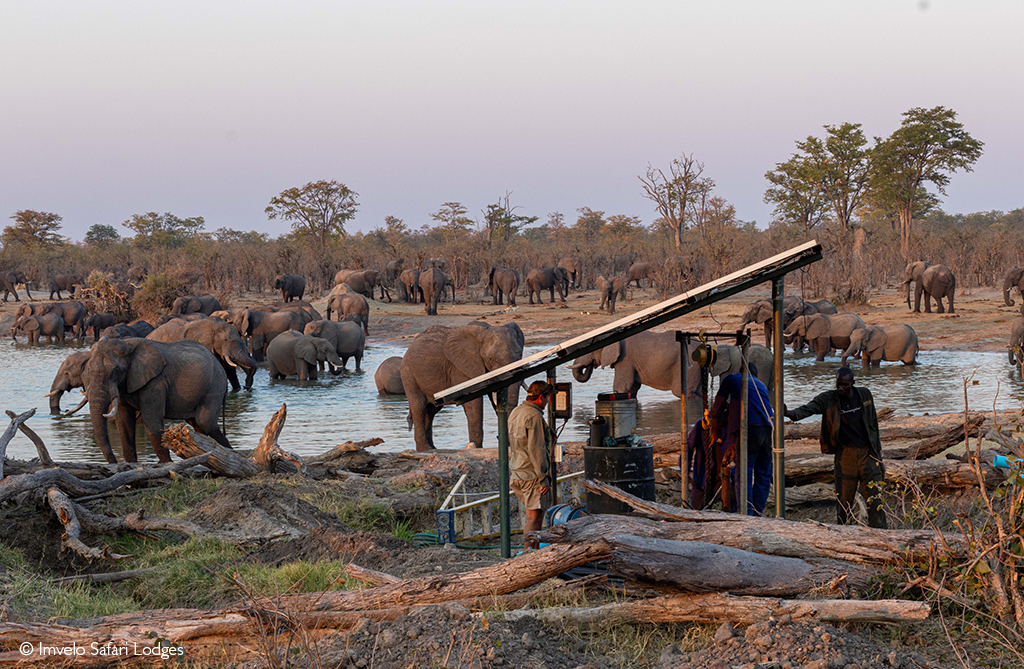
Imvelo maintains 18 pumps in and around Hwange National Park, which provide essential water for people and wildlife throughout the year by Mark Butcher, Imvelo Safari Lodges.
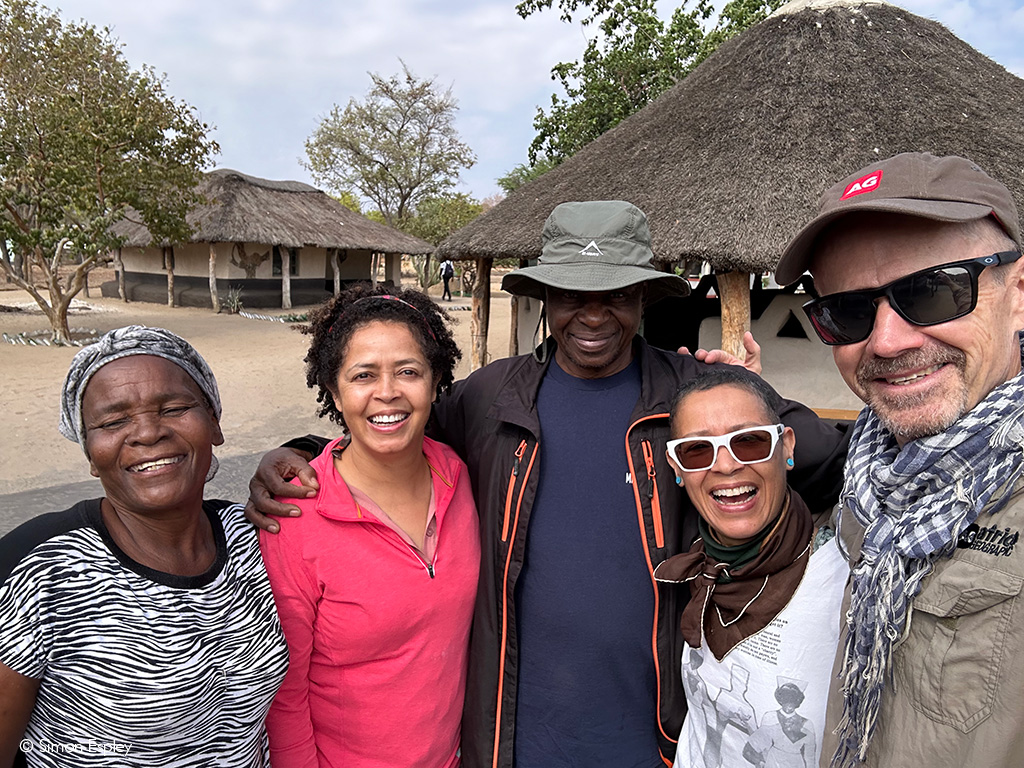
We spent time with Johnson Ncube – Ngamo Village chief and a teller of fascinating stories about life on the Hwange boundary by Simon Espley.
The Water and Wildlife of Hwange
After my time with our winners, I spent time with Imvelo owner Mark Butcher, who took me on a two-day tour of the remote southwestern Hwange area. We drove along the park fenceline to Jozibanini Camp inside the park – a converted Zim Parks station. We also visited several artificial watering holes with boreholes maintained by the Imvelo crew. This is a truly remote camp overlooking a busy pumped waterhole – for lovers of wilderness and solitude. My night there was pure magic – elephant rumblings throughout the dark hours and lions, leopards and hyenas adding to the nocturnal sound safari. Early the next morning, I savoured coffee and freshly baked bread at the fire and watched the antics of a flock of boisterous Meyers (brown) parrots at a bird bath a few meters away. The memory of delicious woodsmoke-infused bacon, eggs and flapjacks made over the fire lingers still.
Once a royal hunting area for Mzilikazi, the Mthwakazi king, Hwange’s shallow soils and scarce water resources made it unsuitable for agriculture. In 1928, Wankie Game Reserve (a colonial mispronunciation later rectified) was gazetted for wildlife conservation. By then, historical records suggest that the park was mostly devoid of wildlife due to the rampant hunting habits of early colonialists. However, the scarcity of water resources would also have played a significant role. The first warden of Hwange National Park, Ted Davison, set out to remedy this by creating many artificial water points, using boreholes to access the area’s underground water supply. The animal populations flourished with ready access to permanent water and concerted conservation efforts.
Those waterholes are essential for wildlife populations to remain in the safety of the park, and the primary reason elephants are hammering the woodland habitat is that the permanent year-round water attracts them. In that way, Hwange acts as a sink for elephants in the region – with populations growing faster than natural breeding would permit. Damned if you do and damned if you don’t.
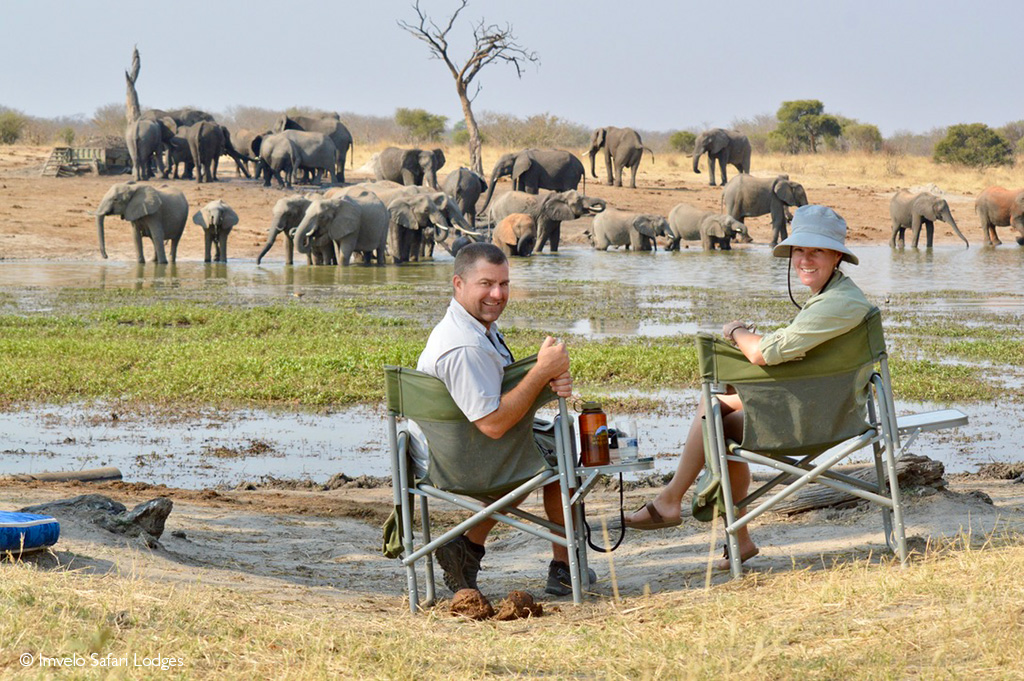
The waterholes of Hwange are a wonderful place to watch quietly while elephants and other wildlife go about their lives a stone’s throw away Mark Butcher, Imvelo Safari Lodges.
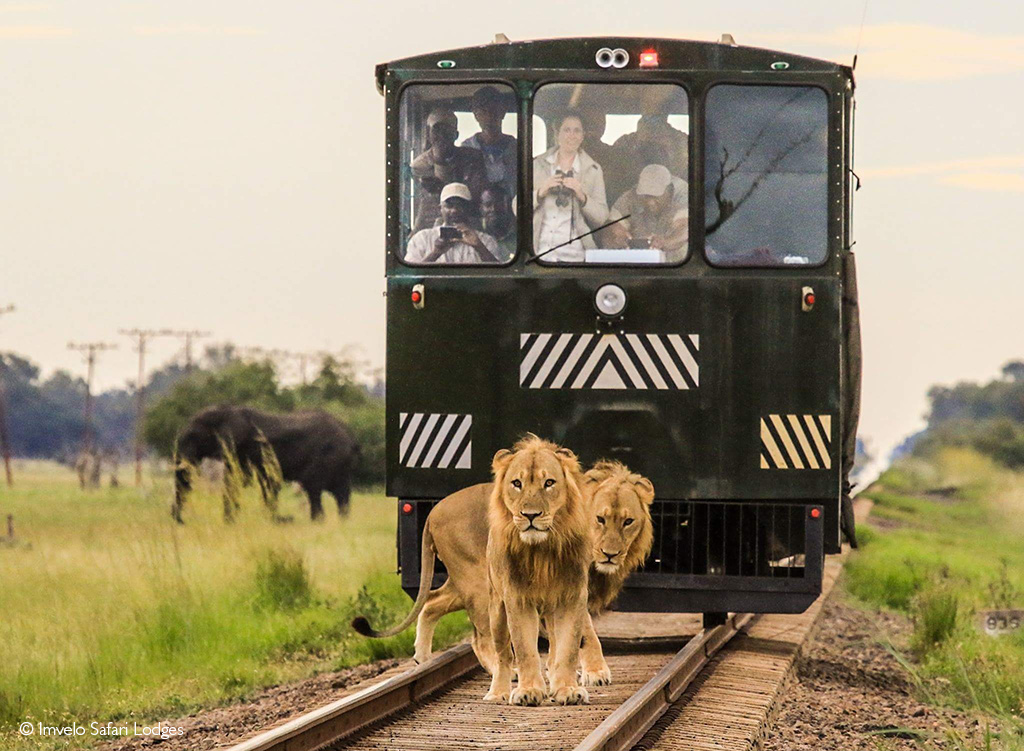
Hwange lions hold up the Elephant Express by Mark Butcher, Imvelo Safari Lodges.
Explore and Stay in Hwange
Simon and our Photographer of the Year winners travelled to Zimbabwe with Mack Air, and visited the following lodges:
Bomani Tented Camp
Bomani Tented Camp is nestled in a private concession on the splendid Ngamo Plains – legendary for impressive year-round game viewing with a great diversity of wildlife in substantial numbers. Enjoy an open-air thatched main lodge, elevated canvas suites, teak viewing decks, a prolific waterhole, a splash pool, and evenings around the fire.
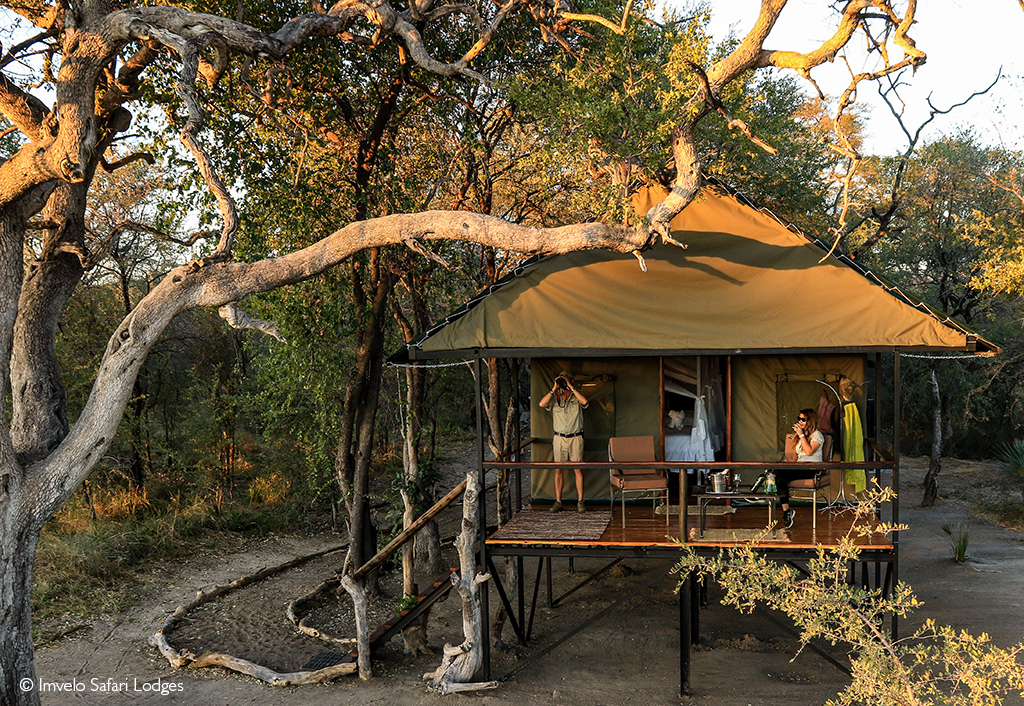
Bomani’s elevated tents are comfortable and discreetly positioned for privacy by Mark Butcher, Imvelo Safari Lodges.
Camelthorn Lodge
Camelthorn Lodge is nestled into a beautiful forest on communal land adjacent to Hwange National Park’s famous Ngamo Plains. The lodge is within the Ngamo Wildlife Sanctuary – with guaranteed close-up encounters with white rhinos. An ancient Camelthorn tree, the property’s namesake, is the centrepiece, with the main lodge and eight beautiful villas flowing around it.
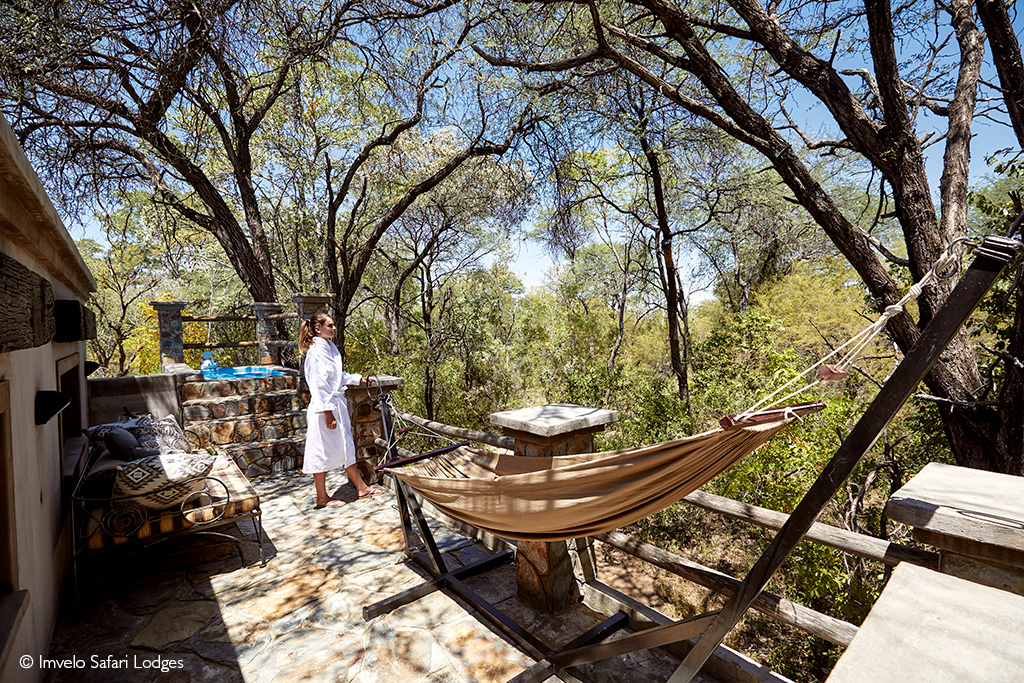
There are few things better than a shady hammock to sleep away the late-morning breakfast feast by Mark Butcher, Imvelo Safari Lodges.
Jozibanini Camp
Jozibanini Camp is a rustic tented camp in the remote southwest of Hwange National Park in a wilderness unused for nearly 20 years. This small camp has elevated canvas suites and a ‘star-bed’ sleeping option on the deck. Jozibanini is about the luxury of isolation and dining al fresco around the campfire.

Jozibanini overlooks an active waterhole and elephants (and other wildlife) regularly stroll through camp by Mark Butcher, Imvelo Safari Lodges.
